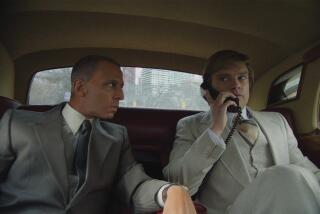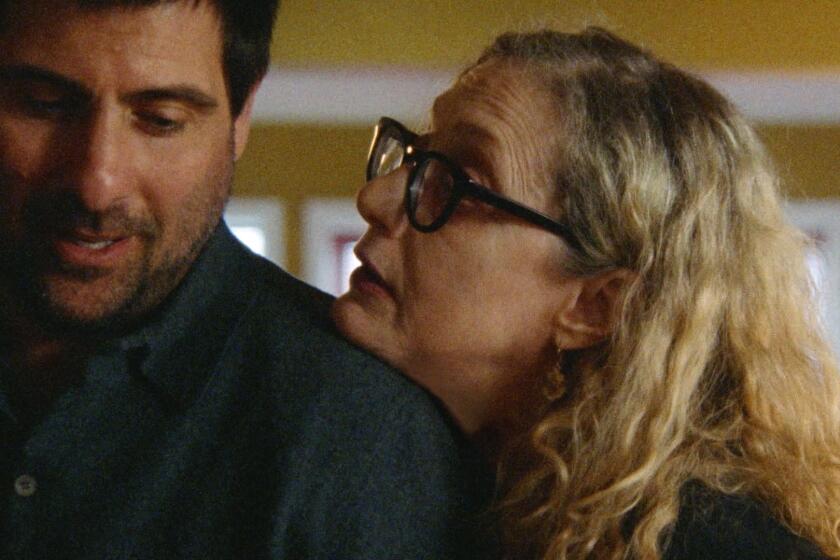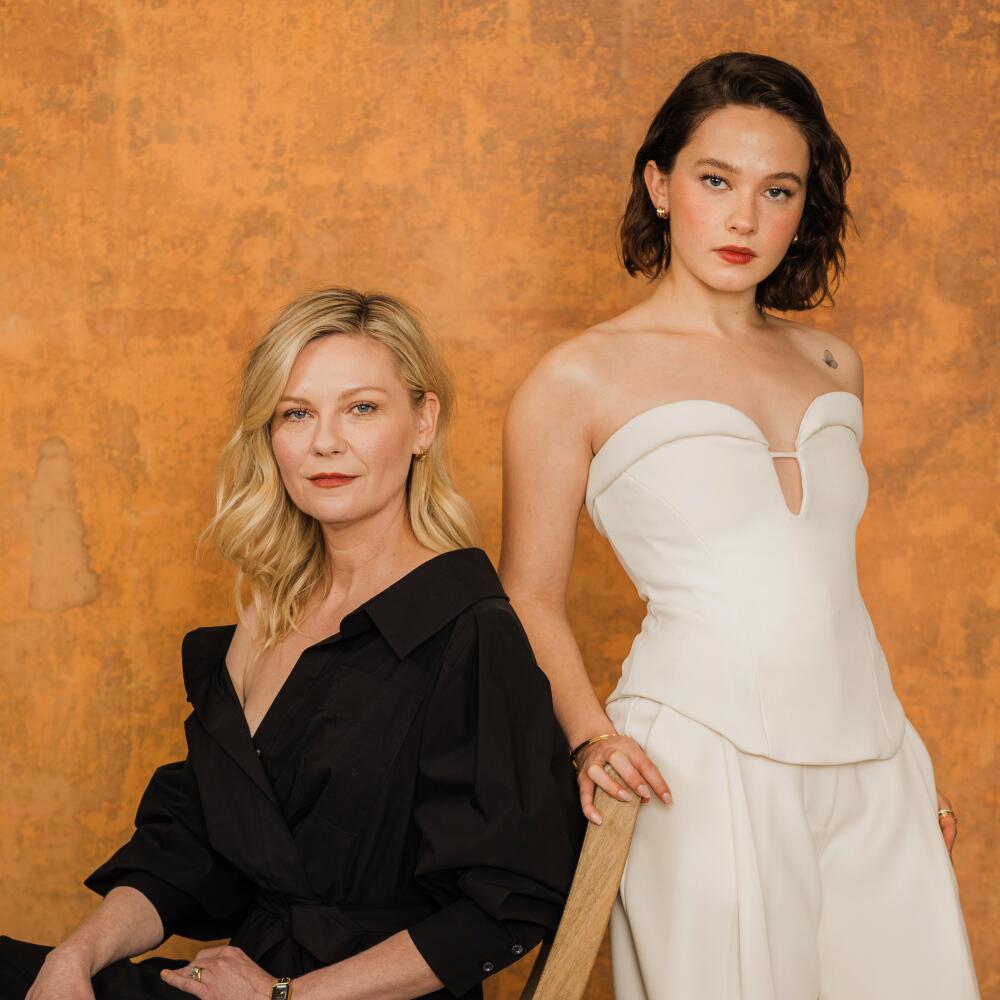
“Civil War” is a purpose-built powder keg of controversial talking points and hot-button ideas. In the near-future world depicted in the film, California and Texas align to take up arms against a fascist, corrupt third-term president who has disbanded the FBI and turned the military against U.S. civilians.
The movie joins other evocative dystopian portraits by Alex Garland, whose previous work as writer-director includes “Ex Machina” and “Annihilation,” as well as the screenplays to “28 Days Later,” “Never Let Me Go” and “Dredd.” Garland’s latest is also a tender, emotionally complex look at legacy and what we leave behind, driven by the performances of Kirsten Dunst and Cailee Spaeny as two photojournalists, a veteran and a novice, trying to process all that they see in a climate that has become deeply skeptical of the press.
“Civil War” had its world premiere at the South by Southwest Film and TV Festival last month in Austin, Texas, just a few blocks from the state Capitol building. As the movie ended and the destabilized audience recomposed itself, Garland and cast members Dunst, Spaeny and Brazilian actor Wagner Moura, who plays another reporter, took to the stage for a Q&A.
It speaks to the knife-edge the movie exists on that, when the SXSW premiere played in two separate theaters, a specific moment in the film elicited triumphant cheers in one crowd and stunned silence in the other.
Attempting to process the film’s anxiety-inducing sound design and disorienting sense of intense, imminent danger will be difficult for anyone, so the idea of immediately standing in front of an audience and coherently speaking about it seems near impossible.
Someone noted that it was Spaeny’s first time seeing the film. With a mix of quiet concern and shocked incredulity, Dunst asked, “Why would you do that to yourself?”
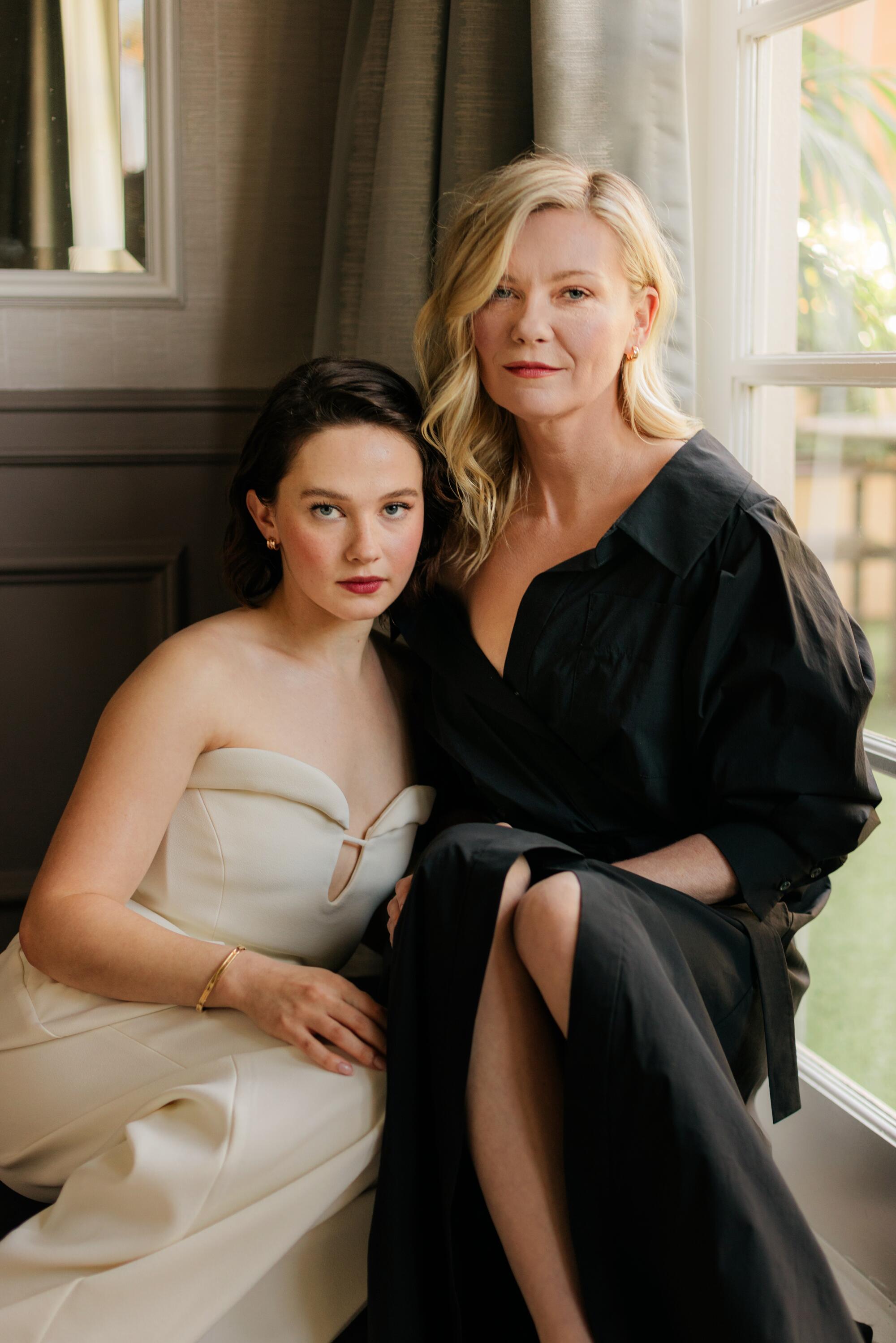
In the film, a group of journalists make their way from New York to Washington, D.C., hoping to get what will likely be the last interview with a besieged president on the brink of being violently deposed. Photographer Lee (Dunst) and her reporting partner Joel (Moura) have reluctantly agreed to give a ride to an aging New York Times correspondent, Sammy (Stephen McKinley Henderson), when they also take on Jessie (Spaeny), an aspiring, camera-clad shooter.
Their journey takes on an increasingly hallucinatory quality as they travel through a broken America, repeatedly encountering situations where it is unclear who is fighting against who and why. It all builds to a staggering battle sequence in Washington and the White House. Along the way, Lee seems less and less sure of why she is doing this work, while young Jessie is drawn closer to the flame of danger.
It’s only a week or so after the Austin premiere when Dunst and Spaeny join The Times on a video call, with Dunst at her home in L.A.’s San Fernando Valley and Spaeny visiting family in Springfield, Mo.
After they both take a moment to admire the brown vintage jacket Spaeny is wearing, Spaeny recalls what it was like seeing the film for the first time.
“I felt really shaken,” she says. “It’s very immersive. It’s a film that sort of grabs you and never lets you go until the very end. There’s no real room to breathe.”
Recognizing the potentially divisive nature of “Civil War,” Spaeny adds, “There are a lot of purposes for film, but I think one of the great things about film is that we can sort of process our deep fears and emotions through cinema. And I think that’s what this film did. And I hope people can work through their thoughts and feelings through this movie.”
Garland finished the script in 2020, ahead of the violent events of Jan. 6, 2021, in the United States and Jan. 8, 2023, in Brazil, or Russia’s invasion of Ukraine in February 2022 — incidents of political unrest that would have seemed obvious inspirations for the story, had they not come after it was written. As unfolding news in the real world uncomfortably mirrored developments in the script, it’s easy to wonder whether the film ever began to feel like a live grenade waiting to go off.
“The implied question is: Is this wise or not wise?” says Garland on a recent Zoom from England. “And I do not know the answer to that. I do feel that there is a responsibility that exists when you put something into a public space. That responsibility absolutely does exist. So for example, if this did not feel like an antiwar film, if it had all the same subject matter, but was in some ways slightly celebratory, I could imagine that being problematic.”
Volume from either side of the political divide can potentially drown out other points of view, Garland says. “I think on balance, I am more concerned at the moment with conversation being silenced than I am with it being had. The voices that are making loud, insistent assertions — to me, acquiescing to that feels more dangerous. I could be wrong, but that’s my gut feeling.”
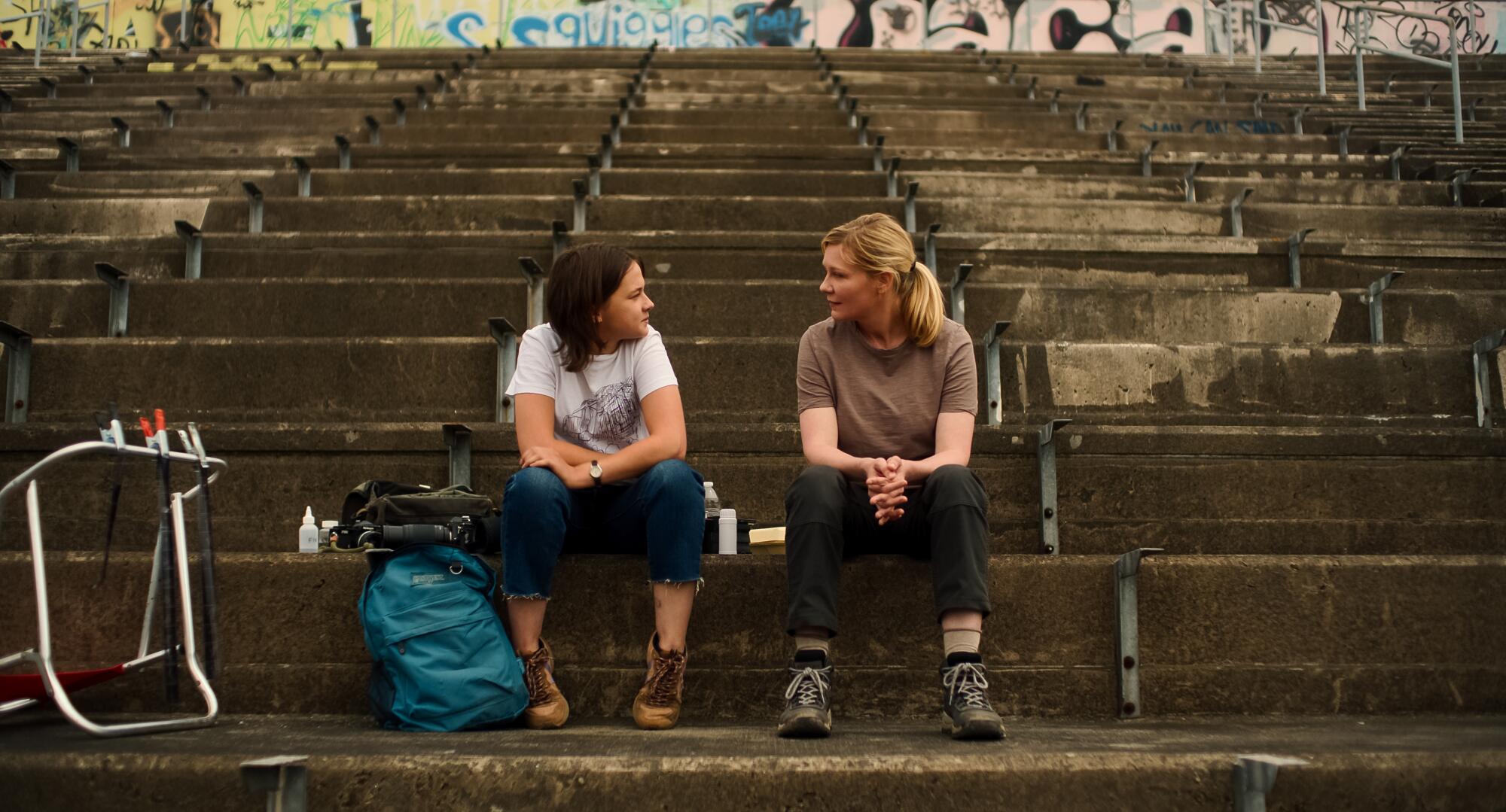
Garland’s father, Nicholas Garland, worked as a political cartoonist in England, and so Garland’s childhood was surrounded by journalists. (Both he and his brother have foreign correspondents as their godfathers.) So telling the story of an America torn apart through the eyes of a group of journalists made sense.
If the onscreen dynamic between Lee and Jessie forms the emotional core of the movie, a comparable bond seems to have grown between Dunst and Spaeny. Dunst, 41, has been working since the age of 3, making her film debut at 6 years old. Spaeny, 25, previously worked with Garland on the 2020 television series “Devs” and won the Volpi Cup for best actress at last year’s Venice Film Festival for her depiction of Priscilla Presley in Sofia Coppola’s “Priscilla.”
Spaeny got that role after Dunst recommended her to Coppola, having met on “Civil War.” Dunst has a relationship with Coppola that goes back some 25 years, having previously worked together on “The Virgin Suicides,” “Marie Antoinette” and “The Beguiled.”
“There are certain actors you work with and you just feel free and present and on the same page of how you approach things, and I immediately felt that with Cailee,” says Dunst. “The camera, the crew goes away and you’re really in something with somebody. And that’s the most magical feeling on set. Cailee was such a present actress, and there was so much going on with her. We really looked at each other and responded to each other. And that doesn’t always happen.”
All of which made Spaeny seem particularly well-suited for entry into the exclusive club of actors working with Coppola. “Sofia is somebody who captures the most intimate moments,” says Dunst. “And I know that Cailee and what she expresses is subtle but full, full of whatever’s inside her. She can say a lot without saying much, which is a lot of what Sofia likes to capture in her films.”
In her window of the video call, Spaeny is visibly taken aback by all that from Dunst, who she describes as “one of my heroes,” adding, “That was really special to hear.”
Dunst diffuses the moment by adopting an exaggerated Valley girl sing-song, “I basically fell in love with Cailee and I was like, ‘She’s the best, you need to work with her.’” Switching back to her natural voice, Dunst adds, of her recommendation to Coppola, “It was so deserving. I just said what I felt.”
“Well, you sort of changed my life by doing that,” said Spaeny, “so thanks.”
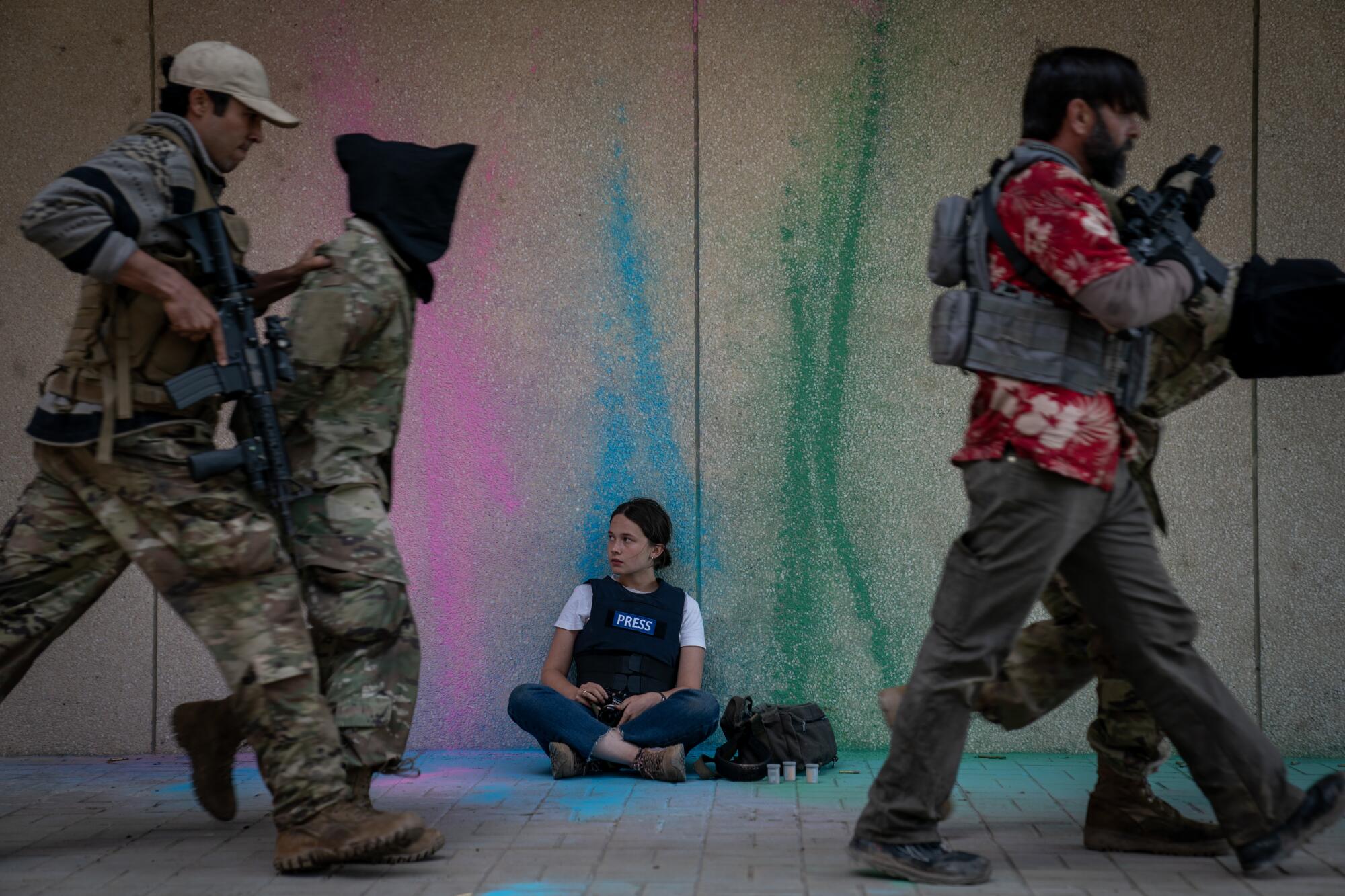
For his part, director Garland says any extratextual relationship between Dunst and Spaeny was a fortuitous byproduct and not by design.
“First and foremost, those two are terrific actors,” he says. “And there’s something very simple about that. However, Kirsten, as we know, has grown up in this zone and in this world, and she carries all that lived experience with her. And that’s a journey Cailee is starting. So there is a kind of correlation. The people in that industry, in that space, are under strange pressures, very intense pressures that can lead them to become jaded unless they find a way to negotiate it.”
Since much of the story is about journalists on a road trip to Washington, so too did the four main actors spend a lot of their time together in a car. It gave Moura a chance to see the relationship between Spaeny and Dunst develop up-close.
“I think that’s the heart of the movie, the relationship between Lee and Jessie,” says Moura during a phone call from Los Angeles. “And I think that Kirsten took the role of having Cailee under her wing in a very nice, beautiful way. Off-camera, too, it was all very gracious and nice. In spite of that, it was a very hard shoot. Every day we were dealing with violent and horrible things, but the dynamic between us, the actors, was great.”
For Spaeny, the strength of the connection that formed with Dunst was unexpected.
“A lot of the times I meet other actors, especially actors who have been working in the industry for a while, they have a sort of wall up,” says Spaeny. “Kirsten doesn’t have that. She wears her heart on her sleeve and it makes you feel like you can be your 100% self around her. It’s like, how am I going to do this scene with this person? And I knew that we would always figure it out.”
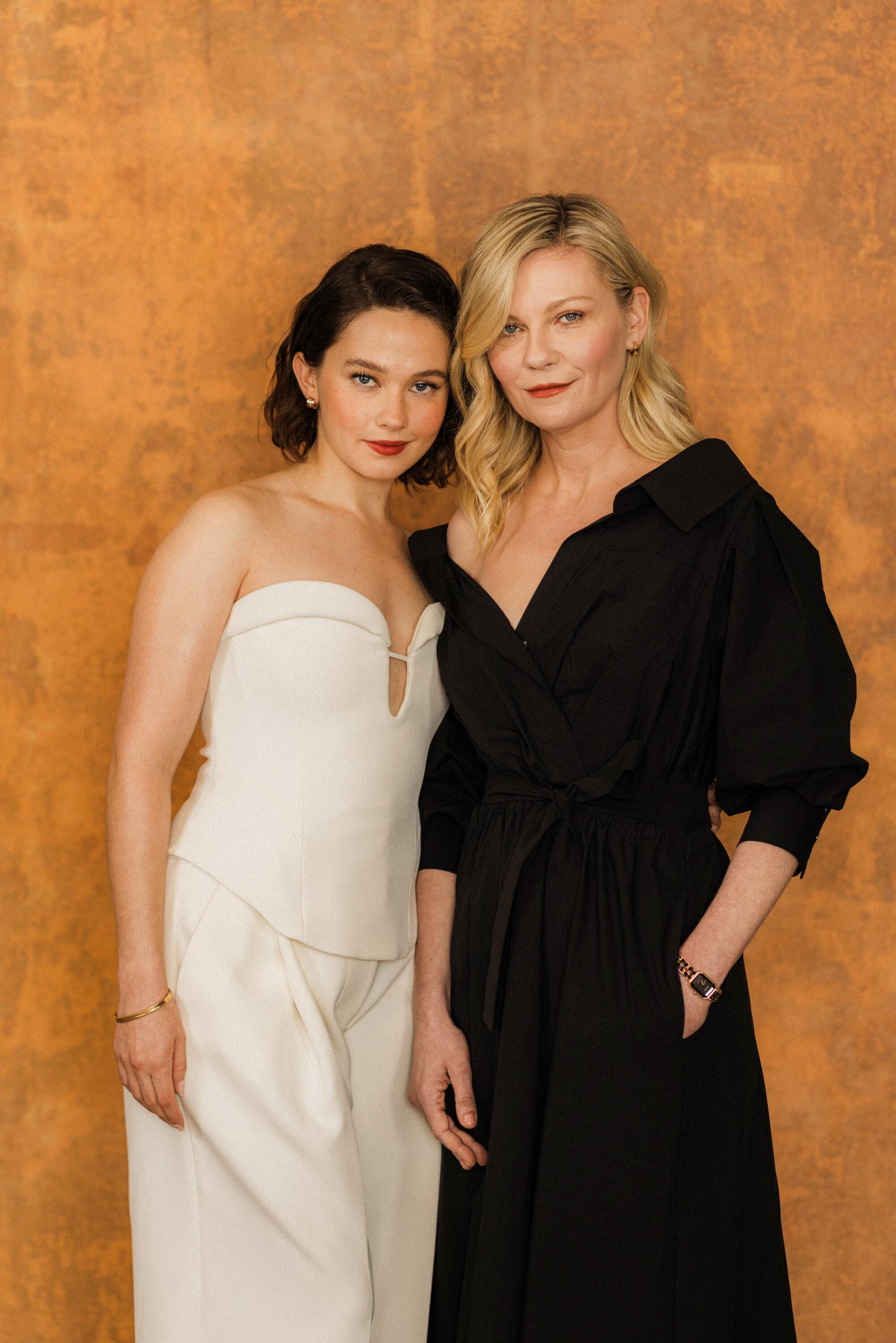
“It kind of happened naturally, don’t you think?” responds Dunst. “We didn’t really need to force anything in that way. And it’s written in the script, that’s the journey of these two, me recognizing myself within [Jessie], but also: Don’t do this because you’re going to become something that is not easy to handle in life. Those parallels are not how I feel about acting. Those parallels aren’t at all how I feel I would talk to Cailee about being an actress or something. But it wasn’t something I was thinking about while we were making it because it’s kind of corny to think about in that way. Like, ‘I’m the mentor and you are the mentee.’ It’s so much deeper than that.”
Dunst mentions she did make one addition to an early scene with Spaeny — “This is some of my woo-woo stuff that I do,” Dunst says — suggesting that as an undercurrent to the scene, they imagine that Lee was Jessie’s long-lost mother.
“I like to think of things a little bit more unconscious,” Dunst says. “I never while making the film was like, ‘You’re little me.’ Because Cailee’s her own woman.”
“I felt protected by you outside of the movie, outside of our characters,” says Spaeny. “That felt genuine. But it didn’t feel like an actory thing. It just felt like, ‘Hey, we get each other. I see you, you see me,’ and we didn’t need to talk about it. The best stuff comes through the stuff you don’t talk about.”
Though “Civil War” seems built to jump from the entertainment pages to the editorial section, providing fodder for various perspectives across the political spectrum, Garland and his collaborators intend it first and foremost to get people out of their entrenched ideological positions and back to a place of listening and sharing ideas.
“I said to someone way back when I was first doing this, ‘I want to do a film where journalists are the heroes,’ and they said, ‘Are you crazy? Everybody hates journalists,’” says Garland. “It actually really jolted me. Journalism is 100% required. A free, fair press is an absolute necessity. It’s like saying, ‘I hate doctors.’ What are you going to do without them? And at the same time I was interested in why is journalism not trusted in the way it used to be?”
To that end Garland was careful in how he depicted the journalists at work. “One of the things I tried to do was show journalists as reporters, intentionally keeping bias out of their reporting. They even have a conversation about it at one point, like, our job is to record this and send it back, in order to make other people ask questions. And then the film is echoing that by functioning like a reporter.”
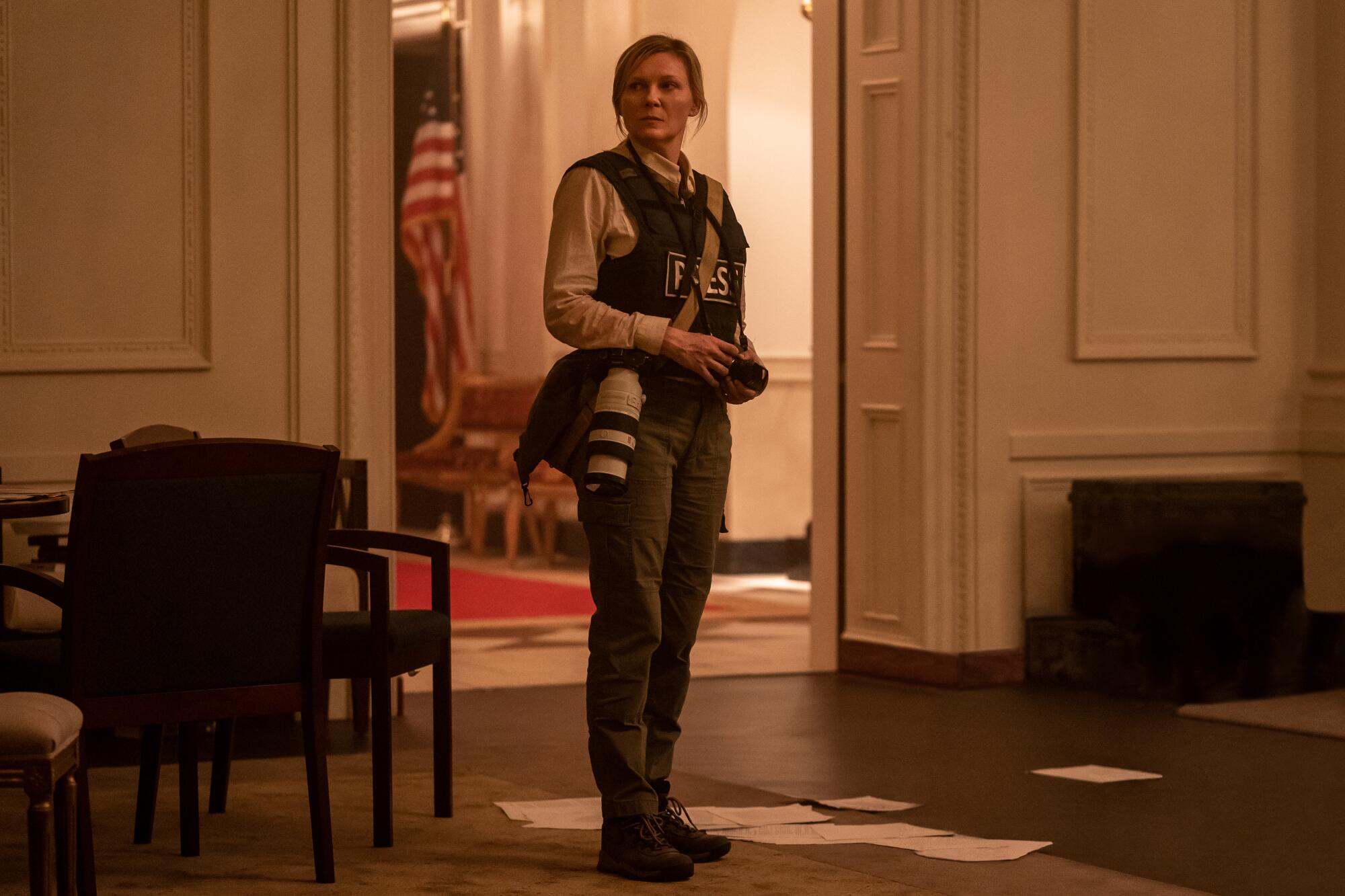
The relationship between the characters played by Dunst and Spaeny feels like the essence of what Garland was trying to explore against the larger canvas of the movie’s politically-charged events. At a time of deep division, connecting has become more vital than ever.
“This is a movie about anti-polarization and that’s not just happening in our country, but all over the world,” says Spaeny. “If we can start having conversations, if we start listening, there is a version of this where we don’t end up in a position where this is possible.”
With a sense of both curiosity and deference, as if she doesn’t want to be the one giving the last word, Spaeny asks, “Kirsten, what do you think?”
“It’s a warning of what happens when you don’t treat people with humanity, stop listening to each other,” says Dunst. “At the end of the day we’re all people with families and different religions and a democracy and that is something that we should be very respectful of.”
Being released into the pressure-cooker atmosphere of an election cycle makes the film feel all the more vital and necessary. “This film, it’s hard to talk about because you want it to really help open up conversations — real conversations,” Dunst stresses. “It’s like, what are the consequences? The plausibility of a modern civil war unfolding in America is pretty f—ing scary and it shows you no nation is immune to war. So get your s— together.”
More to Read
Only good movies
Get the Indie Focus newsletter, Mark Olsen's weekly guide to the world of cinema.
You may occasionally receive promotional content from the Los Angeles Times.


